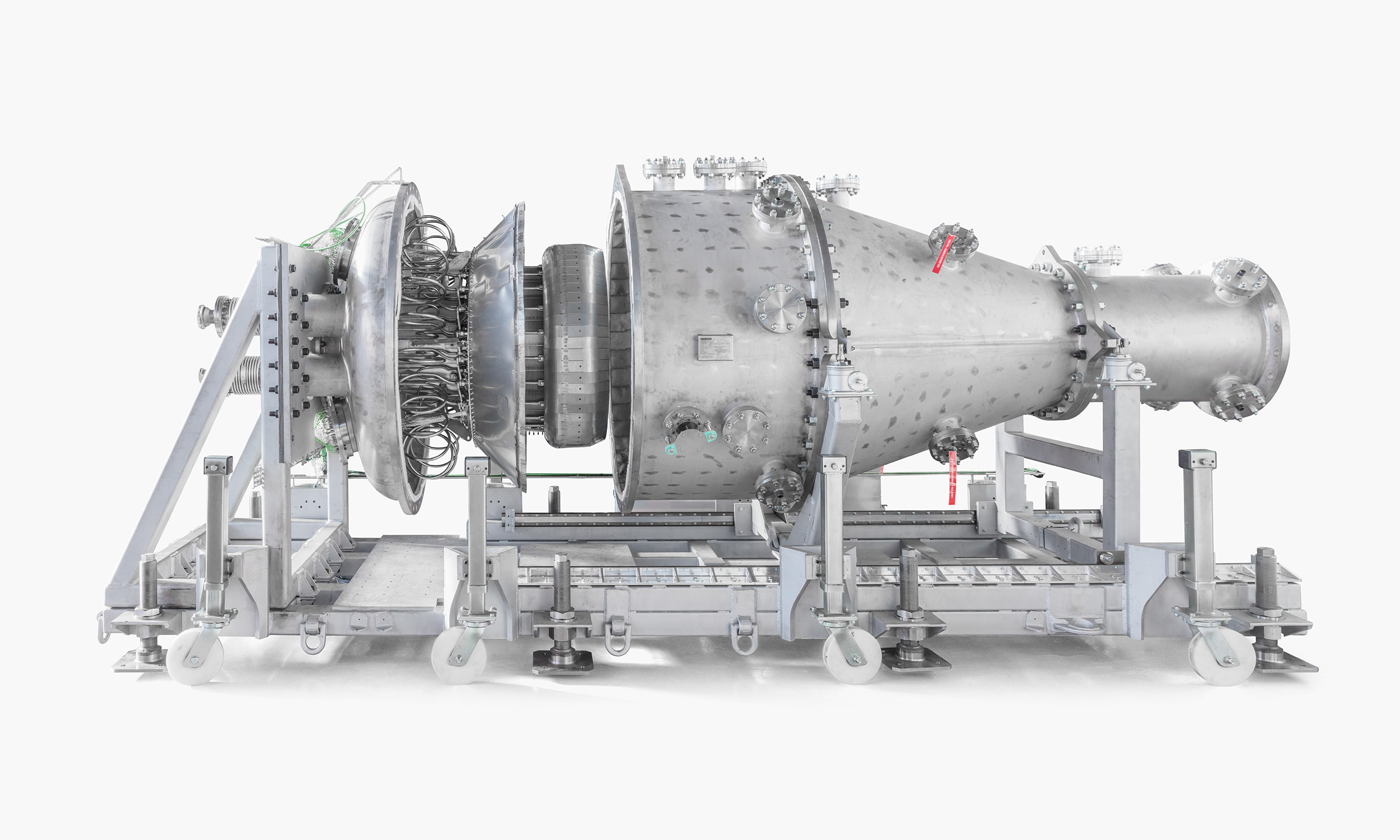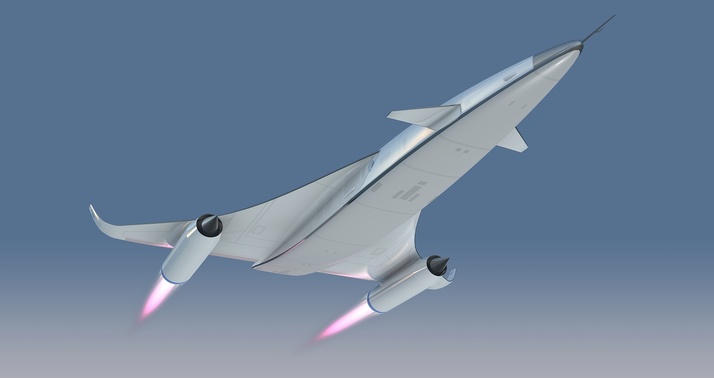Imagine a hypersonic passenger aircraft that would cut the journey time between London and New York to around two hours. At Mach 5, or five times the speed of sound, the aircraft would complete a trip across the Atlantic in around 120 minutes. Mach 5 is more than twice as fast as the cruising speed of Concorde and over 50% faster than the SR-71 Blackbird – the world’s fastest jet-engine powered aircraft. A flight across the Pacific would take roughly three hours. Flight times from London to Sydney could be 80% shorter. Who needs Elon Musk?
Reaching these speeds would require an aircraft engine that has never previously existed. But last week, the world got a glimpse of a new future via a project which has been germinating for 30 years.
Reaction Engines was founded in 1989 by three propulsion engineers from Rolls Royce: Alan Bond, Richard Varvill and John Scott Scott. Their idea was that in order for an engine to reach hypersonic speeds, the air going into it would have to be rapidly cooled, otherwise the engine would melt. Reaction’s breakthrough was inventing a “precooler” or heat exchanger which can take the air down to minus 150 degrees centigrade in less than a 20th of a second.
These ultra-lightweight “heat exchangers” would enable aircraft to fly over five times the speed of sound in the atmosphere. Thus the SABRE – Synergetic Air-Breathing Rocket Engine – was born. The Sabre engine “breathes” air to make 20 per cent of the journey to orbit, before switching to rocket mode to complete the trip.
Last week, Reaction Engines passed a significant milestone. It successfully tested its innovative precooler at airflow temperature conditions representing Mach 5.
The ground-based test at the Colorado Air and Space Port in the US, saw the precooler successfully operate at temperatures of 420ᵒC (~788ᵒF) – matching the thermal conditions corresponding to Mach 3.3 flight.

But this technology wouldn’t just be applicable to hypersonic flight. The precooler technology, developed by Reaction Engines, would significantly enhance the performance of existing jet engine technology, along with applications in automotive, aerospace, energy and industrial processes. Reaction Engines has attracted development funding from the British government, the U.S. Defense Advanced Research Projects Agency (DARPA) and the European Space Agency. It’s also raised over £100m from public and private sources and has secured investment from BAE Systems, Rolls-Royce and Boeing’s venture capital arm HorizonX. Reaction is expected to start building and testing a demonstrator engine next year.
The success of Reaction Engines to date is a sign that the ‘AerospaceTech’ sector is now booming. It is most certainly not alone.
Last month, Boeing and the UK government launched a £2m accelerator program to look for new innovations in this area. Boeing’s HorizonX is backing the initiative.
HorizonX’s Nichola Bates said she wanted to “lower the barriers” for innovators and entrepreneurs looking at aerospace. The UK’s government-backed Aerospace Technology Institute and Boeing will be looking for startups working on Industry 4.0 and sustainability, especially as regards the high carbon footprint of air travel. And there are companies experimenting with lower-carbon fuels, such as hydrogen (such as ZeroAvia) or developing fully-electric jets (Lilium, AeroMobil).
HorizonX has to date invested in companies including Kitty Hawk, the electric jet company backed by Google founder Larry Page. Startup accelerator Ignite will deliver the UK program. Startups will get up to £100,000 in funding, as well as mentoring. HorizonX takes no equity initially but reserves the right to invest in the company’s next funding round at a 20% discount.
Horizon X is also backing Propeller Shannon, a travel technology and aviation accelerator based at Shannon airport in Ireland, together with Datalex, the digital commerce company, and the Irish Aviation Authority.
As well as HorizonX, IAG’s Hangar 51 is also investing, helping start-ups build stronger businesses through a 10-week period of collaboration with International Airlines Group. Hangar 51 reserves the right to participate in any funding rounds — taking up to 20% of equity — for two years.
Meanwhile, others are now deep into the booming aerospace sector:
• Air France-KLM Group runs the BigBlank accelerator which describes itself as a “startup studio” aimed at very early-stage entrepreneurs. It offers seed funding of up to €800,000 per project for 12-18 months.
• Airbus Bizlab has, over the past four years, hosted 72 start-ups at labs in four locations – Toulouse (France), Hamburg (Germany), Bangalore (India) and Madrid (Spain)
• EasyJet is part of the Founders Factory accelerator where startups get £30,000 in cash and support and mentoring valued at £220,000 for 6 months. Founders Factory takes a 4-7% stake in the company in exchange for the program.
• Emirates runs Intelak which offers a cash prize of around €12,000, structured mentorship, and development space at the Dubai Technology Centre
• IATA runs ACCELERATE@IATA which will accelerate 20 to 30 startups per year, matching their solutions with industry requirements, resulting in several pilots or implementations with participating airlines involved.
• International, Aviation Services Centre and DCU Ryan Academy runs Propeller Shannon where 8-12 startups per cohort get €45,000 investment in return for equity. There is a €15,000 participation fee, which is deducted from the investment.
Key European startups in the aerospace include:
• Lilium (Germany): Raised €92.2 million for its five-seater fully-electric aircraft, which can take off and land vertically and will eventually have a speed of 300 KM/H and a 300KM range.
• Volocopter (Germany): German air taxi startup has raised €81.2 million. This drone-like aircraft will have an airspeed of 110 km/h and a range of around 35 km. It features 18 rotors and can ferry two passengers.
• Hybrid Air Vehicles (UK): Having €6.6 million The Airlander has low emissions and huge lift capacity,.
• ROTORVOX (Germany): The Rotorvox C2A is a two-seat, an all-carbon, pusher configuration autogyro developed in Germany.
• Heart Aerospace (Sweden): Produced the ES-19, a nineteen-passenger airliner which has raised €1.9 million and is highly sustainable.
• ZeroAvia (UK): This startup has a £2.7m from the UK government and plans to develop a hydrogen fuel system that could fly a 20-seater plane.
